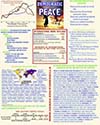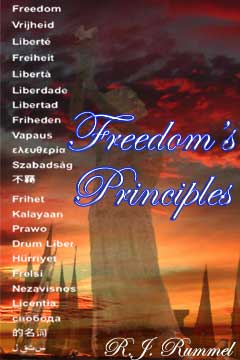[First published on December 23. 2004,in the WorldNetDaily] The number and severity of armed conflicts in the world is on the decline. The world is becoming more peaceful.
What are the facts?
First, in a 2004 Yearbook report, the respected Stockholm International Peace Research Institute states that, “In 2003 there were 19 major armed conflicts in 18 locations worldwide, the lowest number for the post-cold war period with the exception of 1997, when 18 such conflicts were registered.” In 1991, there were 33 wars. The trend line of wars and violence conflict is sharply down.
Second, this drop is further verified by the Canadian organization Project Ploughshares, which in its Armed Conflicts Report 2004 claims that the number of armed conflicts, broadly defined, fell to 36 in 2003, from a peak of 44 in 1995.
Finally, looking more systematically, I have statistically analyzed a variety of violent conflict data sets and found a clear decline in the amount and severity of conflict in recent decades.
How do we understand this?
One explanation for this striking downturn in war and armed conflict is the end of the Cold War. During the Cold War, the United States and Soviet Union tried to prevent wars among their allies or neutrals that would risk escalation to nuclear war. With the end of the Cold War and dissolution of the Soviet Union, it is said, there was a consequent spike in wars, especially separatist and civil wars, and that we are now recovering from it.
However, this explanation seems to ignore the many wars that occurred before the fall of the Soviet Union, such as the Korean, Vietnam, Vietnam-Cambodian, Sino-Vietnamese, Sino-Indian, Pakistan-Indian, Ethiopia-Somalian, Israel and her neighbors, Iraq-Iran wars, etc. Moreover, the trend line of the annual total of those killed in war declined throughout the Cold War.
Another explanation is that with the end of the Cold War, the United Nations and regional bodies have undertaken more effective peacekeeping. True, there may be more missions, more special advisers, more diplomats running around to assess ongoing wars and recommend or try to negotiate solutions. But they hardly are more effective.
For one thing, the United Nations has itself declared its own failure in peacekeeping. For another, there are horrendous failures of the United Nations regarding peace: Israel-Arab violence; Somalia, North Korea, Rwanda, Kosovo, Bosnia, Iraq, Afghanistan, Burma, Liberia, the Democratic Republic of Congo, Sudan and terrorism. The many millions who have died in wars and democide (genocide and mass murder) since the end of the Cold War in 1991 attest to the inadequacy of the United Nations and regional organizations.
If the Cold War’s end and U.N. peacekeeping are inadequate explanations, what might better explain peace breaking out in the world? The growth in the number of democratic governments in the world. This answer is very well supported, both empirically and theoretically.
At the end of 2002, there were 121 democracies governing over 60 percent of the world’s population – 89 of these governments were liberal democracies. This number of democracies has reached such a critical level (there were no liberal democracies in 1900, and 22 in 1950) as to catalyze a reduction in the number of wars and battle dead.
In short, the explanation for the downturn in violence is the growth in democracies. I have subjected this explanation for violence up to the year 2000 to a number of scientific tests, and these are on the above-mentioned website.
Why should the growth in democracies explain the sharp drop in wars? It is because democracies do not make war on each other and have by far the least amount of foreign and domestic violence and democide. Therefore, the greater the number of democracies, the greater is the zone of peace in the world.
That this explanation is missed in the peace research community and by commentators shows how far we have yet to go in the communication and acceptance of this fundamental law of nations. However, top leaders do not miss it. Secretary of Defense Donald H. Rumsfeld, President Clinton’s former National Security Adviser Anthony Lake, and former Prime Minister of Israel Benjamin Netanyahu have mentioned it. It was part of President Clinton’s foreign policy. In his National Security Strategy of September 2002, one of the three pillars is “to extend the peace by seeking to extend the benefits of freedom and prosperity across the globe.”
And the idea of a democratic zone of peace is the basis of President George W. Bush’s “forward strategy of freedom.” Furthermore, in his speech on the 20th anniversary of the National Endowment for Democracy in November 2003, he proclaimed a Forward Strategy of Freedom. He declared that, “As in Europe, as in Asia, as in every region of the world, the advance of freedom leads to peace.” With regard to the Middle East, he said, “As long as the Middle East remains a place where freedom does not flourish, it will remain a place of stagnation, resentment, and violence ready for export.”
President Bush is right. Right theoretically, empirically and historically. Extending freedom extends the region of peace. And with the growth in the number of democracies, we can well see this principle in the drop in the number and severity of armed conflicts in the world.
The best foreign policy for peace is clear: Foster democratic freedom.







